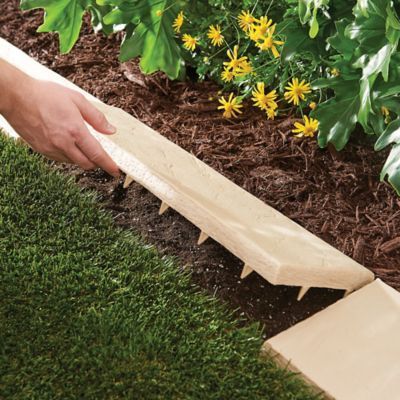Transforming your outdoor space into a vibrant and unique oasis can be achieved through the use of creative garden edging. From whimsical designs to sleek modern styles, there are endless possibilities to elevate the look of your garden. Whether you’re a seasoned gardener or just starting out, these innovative ideas will inspire you to add a touch of charm and character to your outdoor haven.
Unique Garden Edging Ideas to Elevate Your Outdoor Space
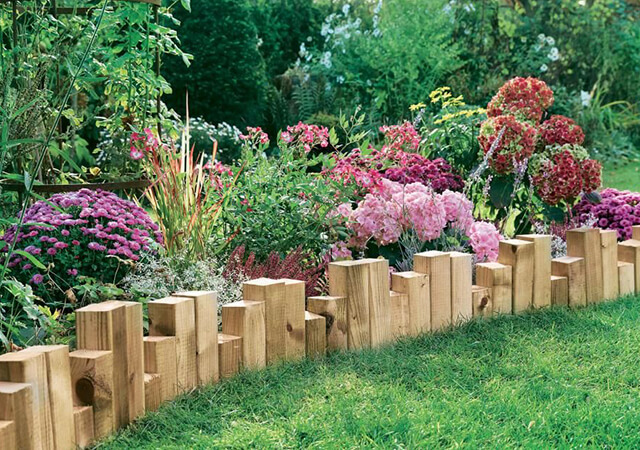 One exciting garden edging idea to elevate your outdoor space is using recycled materials such as old tires, wine bottles, or even broken ceramic pieces. These unique edging materials not only add a touch of creativity to your garden but also help reduce waste. Try arranging the tires in a zig-zag pattern along the edge of your flower bed, or embedding colorful wine bottles upside down in the soil for a whimsical border.
One exciting garden edging idea to elevate your outdoor space is using recycled materials such as old tires, wine bottles, or even broken ceramic pieces. These unique edging materials not only add a touch of creativity to your garden but also help reduce waste. Try arranging the tires in a zig-zag pattern along the edge of your flower bed, or embedding colorful wine bottles upside down in the soil for a whimsical border.
Another creative garden edging inspiration is using natural elements like rocks, pebbles, or driftwood. Create a charming border using different sizes and shapes of rocks to define the edges of your garden beds. You can also arrange smooth pebbles in a mosaic pattern for a more polished look, or incorporate weathered driftwood for a coastal feel. These natural materials add texture and visual interest to your outdoor space.
For a more modern and sleek garden edging option, consider using metal or steel strips to create clean lines and a contemporary aesthetic. These durable materials provide a sharp edge that defines the shape of your garden beds and complements a minimalist design. You can also paint the metal strips in bold colors to add a pop of personality to your outdoor space. Experiment with different widths and heights to create a custom look that suits your style.
Innovative Materials to Use for Garden Edging
 Looking for unique and creative garden edging inspiration to elevate your outdoor space? Say goodbye to traditional materials and explore the world of innovative options that can add a touch of flair to your garden. From recycled wine bottles to reclaimed wood, there are endless possibilities to choose from.
Looking for unique and creative garden edging inspiration to elevate your outdoor space? Say goodbye to traditional materials and explore the world of innovative options that can add a touch of flair to your garden. From recycled wine bottles to reclaimed wood, there are endless possibilities to choose from.
One exciting material to consider for garden edging is decorative glass. Not only does it add a modern and sophisticated look to your garden, but it also reflects light beautifully, creating a stunning visual effect. Another unconventional choice is metal strips or rods, which can be arranged in intricate patterns to define the borders of your garden beds.
For those looking for a rustic and natural aesthetic, stacked stone or pebble mosaics can provide a charming border for your garden. These materials are not only visually appealing but also durable and long-lasting, making them a practical choice for outdoor spaces. Get creative with your garden edging and make a statement with these innovative materials!
Creating Visual Interest with Curved Garden Edges
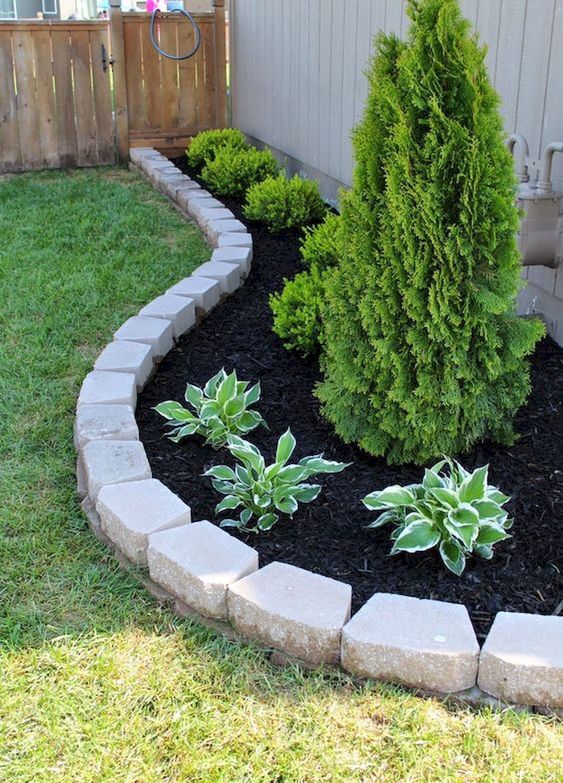 can transform your outdoor space into a whimsical and unique oasis. By incorporating flowing lines and organic shapes, you can add a touch of creativity and charm to your garden. Curved garden edges not only define the boundaries of your outdoor space but also create a sense of movement and fluidity.
can transform your outdoor space into a whimsical and unique oasis. By incorporating flowing lines and organic shapes, you can add a touch of creativity and charm to your garden. Curved garden edges not only define the boundaries of your outdoor space but also create a sense of movement and fluidity.
Why choose curved garden edges?
-
- Curved edges soften the look of your garden
-
- They add a sense of elegance and sophistication
-
- Curved lines create a sense of flow and harmony in your outdoor space
Incorporating curved garden edges into your landscape design
One way to create visual interest with curved garden edges is to mix different materials such as brick, stone, or wood. This eclectic mix adds texture and dimension to your garden while highlighting the unique curves of the edges.
Benefits of curved garden edges:
-
- They help prevent soil erosion
-
- Curved edges can make mowing and maintenance easier
-
- They provide a seamless transition between different areas of your garden
Next time you’re looking to update your outdoor space, consider adding curved garden edges to bring a touch of creativity and charm to your landscape design.
DIY Garden Edging Projects for a Personalized Touch
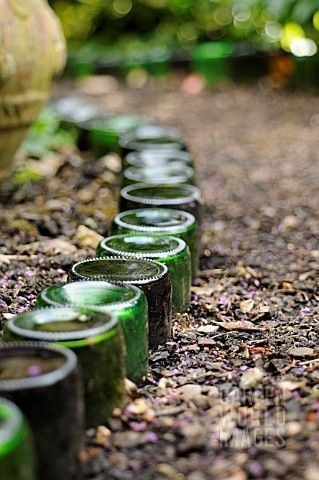 Looking to add a personal touch to your outdoor space? Why not try some DIY garden edging projects to give your garden a unique and customized look. With a little creativity and some basic materials, you can create stunning garden borders that will enhance the overall aesthetic of your yard.
Looking to add a personal touch to your outdoor space? Why not try some DIY garden edging projects to give your garden a unique and customized look. With a little creativity and some basic materials, you can create stunning garden borders that will enhance the overall aesthetic of your yard.
One creative idea for garden edging is to use reclaimed wood to create a rustic border. Simply gather some old wooden planks or fence panels, cut them to size, and secure them into the ground along the edges of your garden beds. This will not only add a charming touch to your garden but also help define the various planting areas.
If you prefer a more modern look, consider using metal edging to create clean lines and a sleek finish. Metal strips or sheets can be bent and shaped to create edging that is both functional and visually appealing. This type of edging is perfect for contemporary gardens or for adding a touch of industrial style to your outdoor space.
Achieving a Modern Look with Metal Garden Edging
 Metal garden edging is a fantastic way to achieve a sleek and modern look in your outdoor space. The clean lines and contemporary finish of metal edging can elevate the overall aesthetic of your garden, giving it a polished and sophisticated feel. With its durability and low maintenance requirements, metal garden edging is a practical choice that will stand the test of time.
Metal garden edging is a fantastic way to achieve a sleek and modern look in your outdoor space. The clean lines and contemporary finish of metal edging can elevate the overall aesthetic of your garden, giving it a polished and sophisticated feel. With its durability and low maintenance requirements, metal garden edging is a practical choice that will stand the test of time.
One creative way to use metal garden edging is to create a border for your flower beds or vegetable garden. By outlining the edges with metal edging, you can keep the soil contained and prevent grass or weeds from encroaching on your garden space. This not only helps to maintain a neat and tidy appearance but also makes it easier to mow and maintain your garden.
Another idea is to use metal garden edging to define pathways or walkways in your garden. By lining the edges with metal edging, you can create a clear and defined path for guests to follow, adding a sense of order and structure to your outdoor space. You can even get creative with the design by opting for curved or diagonal edging patterns to add visual interest to your garden. The possibilities are endless when it comes to using metal garden edging to enhance the modern look of your outdoor space.
Enhancing Flower Beds with Stone Garden Edges
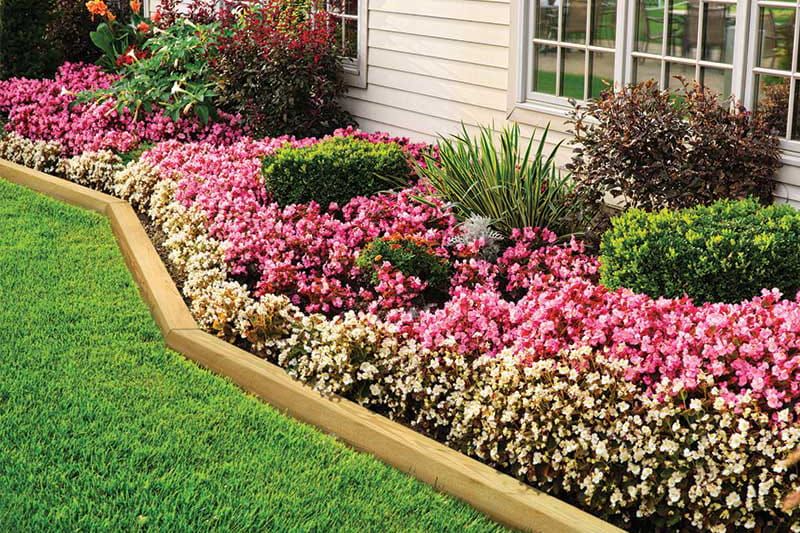 Transform your flower beds into stunning focal points in your outdoor space by incorporating stone garden edges. These natural elements not only add a touch of elegance but also provide practical benefits such as defining boundaries and preventing soil erosion. With a variety of stone options available, you can easily customize the look of your garden to suit your style.
Transform your flower beds into stunning focal points in your outdoor space by incorporating stone garden edges. These natural elements not only add a touch of elegance but also provide practical benefits such as defining boundaries and preventing soil erosion. With a variety of stone options available, you can easily customize the look of your garden to suit your style.
One creative way to enhance your flower beds is by using a combination of different types of stones. Mix and match colors, shapes, and textures to create a unique and eye-catching design. For a more cohesive look, consider using the same type of stone but in varying sizes for a layered effect. This will add depth and visual interest to your garden edges.
Another idea to add visual appeal to your outdoor space is to incorporate decorative pebbles or gravel between the stone garden edges. This simple addition can bring a pop of color and texture to your flower beds, creating a polished and finished look. Plus, it can help to keep weeds at bay and improve drainage in your garden.
Repurposing Everyday Items for Quirky Garden Edging
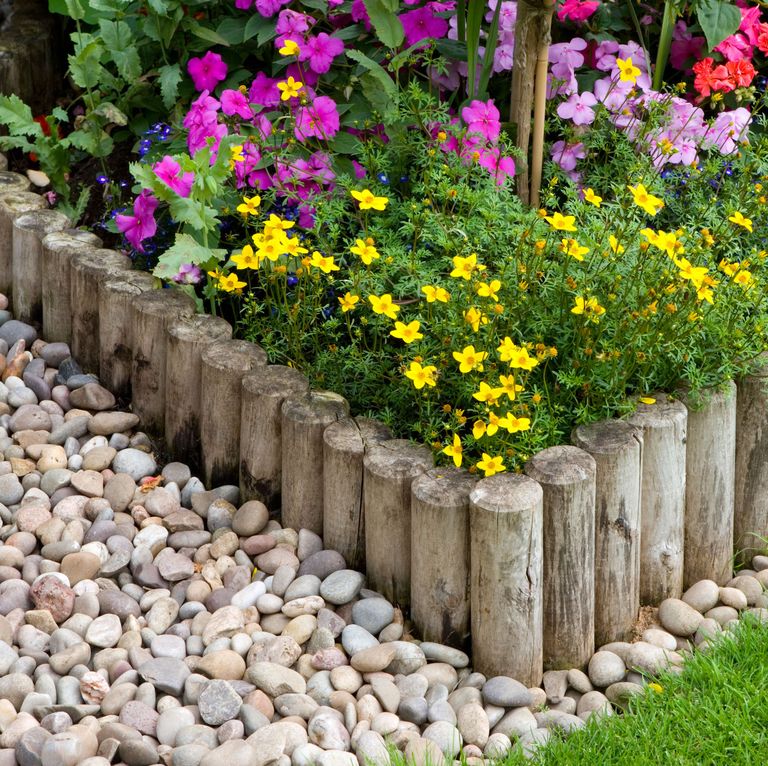 Looking for unique and quirky garden edging ideas to spruce up your outdoor space? Why not repurpose everyday items to create a one-of-a-kind border for your garden beds or pathways. Not only will you add a touch of creativity to your garden, but you’ll also be doing your part to reduce waste and upcycle items that would otherwise end up in the trash. Check out these creative ideas for .
Looking for unique and quirky garden edging ideas to spruce up your outdoor space? Why not repurpose everyday items to create a one-of-a-kind border for your garden beds or pathways. Not only will you add a touch of creativity to your garden, but you’ll also be doing your part to reduce waste and upcycle items that would otherwise end up in the trash. Check out these creative ideas for .
One fun idea is to use old mismatched teacups and saucers as garden edging. Simply dig a shallow trench along the edge of your garden bed or pathway and nestle the teacups and saucers in a row, alternating between cups and saucers. This whimsical edging will add a touch of charm to your garden and is sure to be a conversation starter.
If you have old bicycle wheels lying around, why not use them as garden edging? Simply place the wheels end to end along the edge of your garden bed or pathway, burying them halfway into the ground. This unique edging idea will give your garden a playful and vintage vibe, perfect for adding a touch of nostalgia to your outdoor space.
Blending Nature and Design with Wooden Garden Edges
 Wooden garden edges offer a charming and natural way to blend your outdoor space with the surrounding environment. By incorporating wooden garden edges into your landscaping design, you can create a seamless transition between your garden and the rest of your outdoor space. The organic texture and warm tones of wood add a touch of rustic elegance to your garden, enhancing its overall beauty.
Wooden garden edges offer a charming and natural way to blend your outdoor space with the surrounding environment. By incorporating wooden garden edges into your landscaping design, you can create a seamless transition between your garden and the rest of your outdoor space. The organic texture and warm tones of wood add a touch of rustic elegance to your garden, enhancing its overall beauty.
One creative way to use wooden garden edges is to mix and match different types of wood to create a unique and visually interesting border. You can combine different species of wood, such as cedar, redwood, and pine, to add depth and dimension to your garden edges. Additionally, you can experiment with various shapes and sizes of wooden planks to create a custom look that complements your garden’s style.
Another inspiring idea for incorporating wooden garden edges is to use them as a backdrop for showcasing your favorite plants and flowers. By placing wooden garden edges around flower beds or vegetable gardens, you can create a beautiful frame that highlights the natural beauty of your garden. This not only adds a decorative element to your outdoor space but also helps to define and structure your garden layout. So, unleash your creativity and explore the endless possibilities of !
Low-Maintenance Options for Effortless Garden Edging
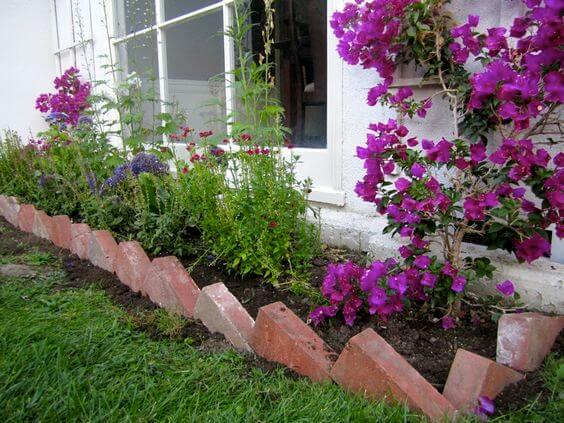 For garden enthusiasts looking for easy and stylish ways to edge their outdoor spaces, there are plenty of low-maintenance options to choose from. One creative idea is using natural stone or pebbles to create a border around flower beds or walkways. Not only does this add a touch of elegance to the garden, but it also requires minimal upkeep.
For garden enthusiasts looking for easy and stylish ways to edge their outdoor spaces, there are plenty of low-maintenance options to choose from. One creative idea is using natural stone or pebbles to create a border around flower beds or walkways. Not only does this add a touch of elegance to the garden, but it also requires minimal upkeep.
Another effortless garden edging option is incorporating raised garden beds into the design. These can be made from weather-resistant materials such as composite wood or recycled plastic, making them durable and long-lasting. Not only do raised beds provide a defined edge to the garden, but they also help to prevent weeds from creeping into the designated planting areas.
For a more whimsical look, consider using recycled glass bottles as a colorful and unique garden border. Simply bury the bottles neck-down along the edge of the garden bed to create a playful and eco-friendly edging solution. This creative idea not only adds a pop of color to the garden but also repurposes materials that would otherwise end up in a landfill.
| Material | Pros | Cons |
|---|---|---|
| Natural Stone | Durable and elegant | Expensive |
| Raised Beds | Prevent weeds and provide structure | Requires initial setup |
| Recycled Glass Bottles | Colorful and eco-friendly | May break if not buried properly |
Edging Solutions for Sloped Gardens
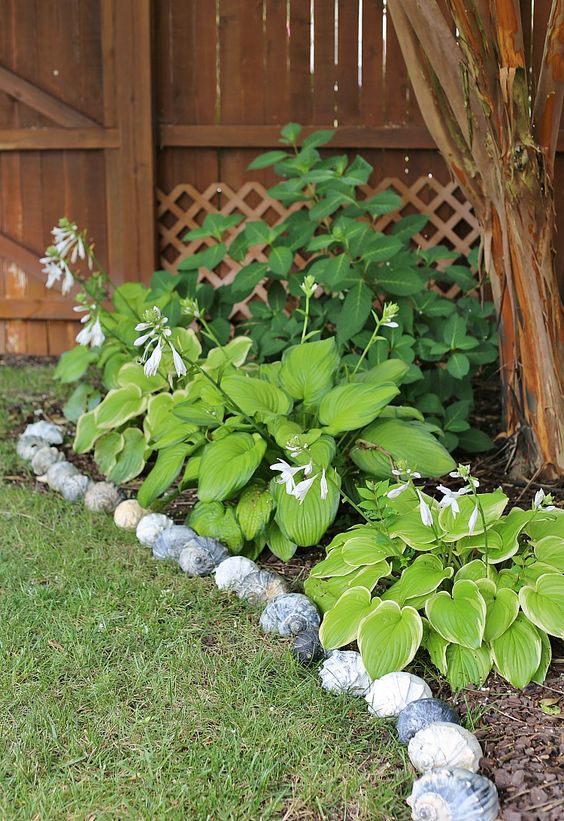 When it comes to landscaping sloped gardens, finding the right edging solutions can make a big difference in both functionality and aesthetics. One creative idea is to use natural stone blocks to create a retaining wall that doubles as a stylish border for your garden beds. This not only helps prevent soil erosion on slopes but also adds a touch of rustic charm to your outdoor space.
When it comes to landscaping sloped gardens, finding the right edging solutions can make a big difference in both functionality and aesthetics. One creative idea is to use natural stone blocks to create a retaining wall that doubles as a stylish border for your garden beds. This not only helps prevent soil erosion on slopes but also adds a touch of rustic charm to your outdoor space.
Another innovative edging solution for sloped gardens is tiered planters. By stacking planters of varying heights along the slope, you can create a visually interesting and practical way to showcase your favorite plants and flowers. This technique not only adds depth and dimension to your garden but also helps to define different areas within your outdoor space.
For a more modern and sleek look, consider using metal landscape edging to create clean lines and a polished finish to your sloped garden. This type of edging is not only durable and low-maintenance but also provides a contemporary touch that complements a variety of garden styles. Plus, the ability to bend and shape the metal edging allows for endless creative possibilities in designing your garden layout.
Incorporating Lighting into Your Garden Edging Design
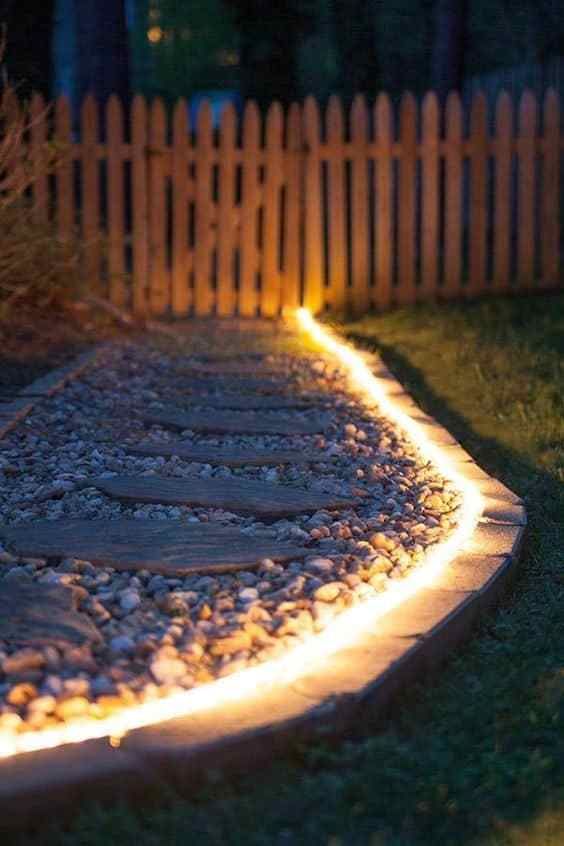 One way to elevate your garden edging design is by incorporating lighting elements. Adding lights along the edges of your garden can create a magical and inviting atmosphere, especially in the evening. There are various creative ways to integrate lighting into your garden edging design, from simple solar-powered stake lights to more elaborate string lights or spotlights.
One way to elevate your garden edging design is by incorporating lighting elements. Adding lights along the edges of your garden can create a magical and inviting atmosphere, especially in the evening. There are various creative ways to integrate lighting into your garden edging design, from simple solar-powered stake lights to more elaborate string lights or spotlights.
Here are some ideas to inspire you:
-
- Fairy lights: String fairy lights along the edges of your garden for a whimsical and enchanting look.
-
- Solar-powered stake lights: These are easy to install and provide a soft glow along your garden edges.
-
- LED strip lights: Place LED strip lights underneath the edge of your garden bed for a modern and sleek look.
-
- Spotlights: Use spotlights to highlight specific plants or features along your garden edging.
Consider creating a lighting plan for your garden edging design. Think about where you want the lights to go, how bright you want them to be, and what type of ambiance you want to create. Experiment with different lighting options to see what works best for your outdoor space. Remember, the goal is to enhance the beauty of your garden while also providing practical illumination for pathways or seating areas.
is a great way to make your outdoor space more inviting and functional. Whether you choose to go for a subtle and understated look or a bold and dramatic effect, lighting can truly transform the atmosphere of your garden. Get creative with your lighting choices and let your garden shine in the evening hours.
Adding Functionality with Multifunctional Garden Edging
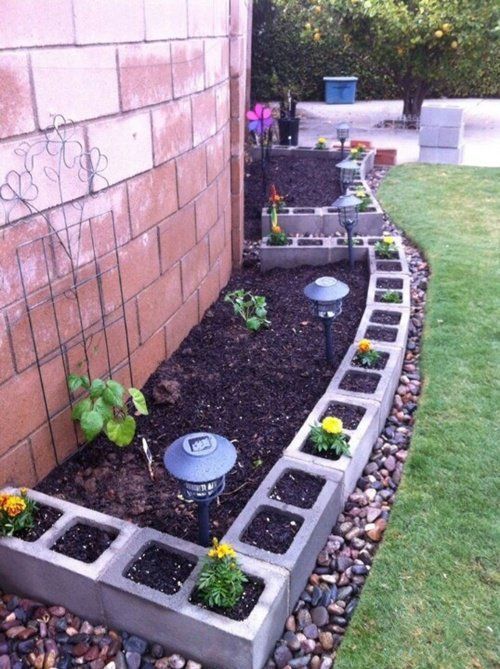 can transform your outdoor space into a beautiful and organized oasis. With the right garden edging, you can create distinct areas within your garden, define pathways, and keep mulch or gravel in place.
can transform your outdoor space into a beautiful and organized oasis. With the right garden edging, you can create distinct areas within your garden, define pathways, and keep mulch or gravel in place.
Using versatile materials such as natural stone, metal, or wood, you can add texture and visual interest to your garden while also providing practical benefits. Brick garden edging can create a classic look, while steel landscape edging offers a sleek and modern touch. Wooden garden borders are perfect for a rustic or cottage-style garden.
Incorporating multifunctional garden edging can also help with water retention, soil erosion, and weed control. By creating raised beds or retaining walls with garden edging, you can improve drainage and prevent soil runoff. Interlocking edging systems make it easy to install and maintain a cohesive look throughout your garden. Experiment with different styles and materials to find the perfect garden edging solution for your outdoor space.
Achieving a Seamless Transition Between Lawn and Garden Bed
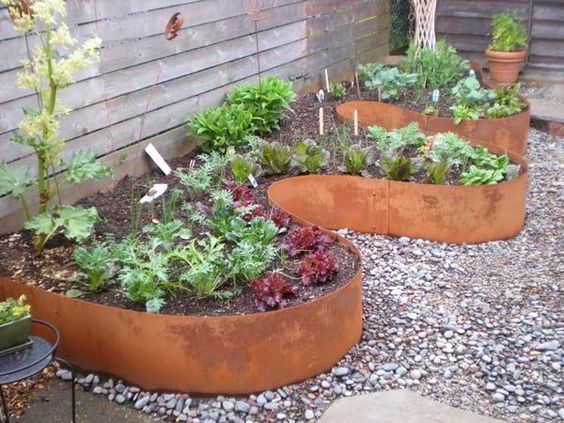 One way to achieve a seamless transition between your lawn and garden bed is by utilizing creative garden edging ideas. This not only adds visual interest to your outdoor space but also helps define the different areas of your yard. Think outside the box and consider unconventional materials such as recycled glass bottles, colorful tiles, or even driftwood for a unique touch.
One way to achieve a seamless transition between your lawn and garden bed is by utilizing creative garden edging ideas. This not only adds visual interest to your outdoor space but also helps define the different areas of your yard. Think outside the box and consider unconventional materials such as recycled glass bottles, colorful tiles, or even driftwood for a unique touch.
Create a cohesive look by using consistent edging around your lawn and garden bed. This can be achieved by choosing a material that complements the overall style of your outdoor space, whether it be modern, rustic, or whimsical. Bold metal or stone edging can provide a clean and elegant finish, while natural elements like rocks or logs can create a more organic feel.
For a more playful and eclectic look, mix and match different types of edging materials to create a dynamic visual appeal. Consider combining metal borders with whimsical mosaic tiles or creating a border with a variety of plants and flowers. Embrace your creativity and choose edging that reflects your personal style and enhances the beauty of your garden bed. Let your imagination run wild as you experiment with various edging techniques to achieve a seamless transition between your lawn and garden bed.
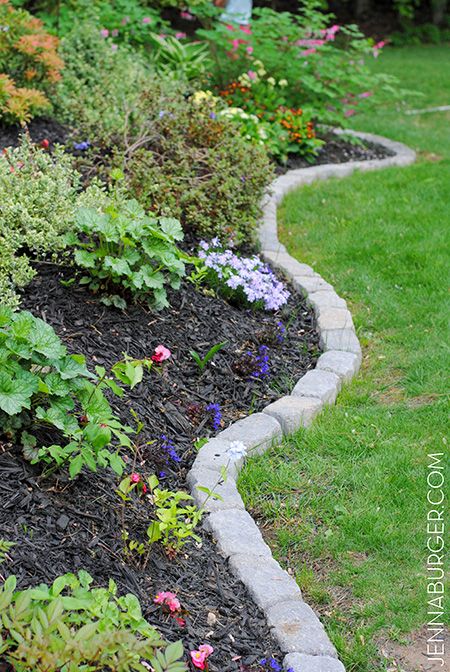 Q&A
Q&A
Q: What is garden edging and why is it important for outdoor spaces?
A: Garden edging is a border that separates different areas of a garden, such as flower beds, pathways, and lawns. It helps define the various spaces and adds a decorative touch to the outdoor area.
Q: What are some creative garden edging ideas to enhance the aesthetic appeal of an outdoor space?
A: Some creative garden edging ideas include using natural elements like rocks or wood, creating a mosaic with colorful tiles, or incorporating recycled materials such as old bottles or tires.
Q: How can garden edging help in maintaining a well-organized garden layout?
A: Garden edging helps keep different elements of the garden separate and prevents plants from overgrowing into pathways or other areas. It also makes maintenance tasks like mowing or weeding easier by providing clear borders.
Q: Are there any eco-friendly options for garden edging materials?
A: Yes, there are several eco-friendly options for garden edging materials, such as reclaimed wood, recycled plastic, or natural stones. These materials not only add a unique touch to the outdoor space but also help reduce waste and promote sustainability.
Q: Can garden edging be functional as well as decorative?
A: Yes, garden edging can serve both functional and decorative purposes. In addition to defining garden areas and enhancing the visual appeal, it can also help with water drainage, prevent soil erosion, and create barriers for invasive plants.
 decorafit.com Design ideas for your home and patio
decorafit.com Design ideas for your home and patio
